As a tourist from outside Australia, you can often feel you are skating over the surface of the country even if you take the time to walk curiously through it, explore off the beaten track and seek out insights from local tours. There are often many more cultural strata beneath the surface that you miss. In Oz, as in America, history has contributed attitudes and mythologies that remain powerful today: the adventurous and often futilely hard-working gold miner; the valiant farmer and rancher braving drought, fire and poverty in the outback; the exploited aborigines chased off their homeland and held back by prejudice; the hardy fishermen or whalers who went down to the sea and often failed to come back. As Americans, we understand many of these from our own history.
A very different cultural heritage here in Oz comes from its origins in imprisonment. The first ships from England brought soldiers prepared to colonize the land and enable profitable commerce for England. They also brought male and female prisoners, true felons and their families, as well as many convicted of political crimes, including the Irish or anti-monarchy republicans. A large number of contemporary Australians trace their families back to those convicts.
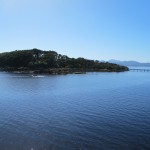
As Australia began to outgrow its origins as a penal colony, there was another place to accommodate “transportation” as the import of prisoners was called – Tasmania. As an island, it was especially hard to escape. Even more secure were the islands off this island off the mainland, like Maria Island on the east coast, or the dreaded Alcatraz-like Sarah Island within huge Macquarie Harbor at Strahan on the west coast, or the all-but-an-island of the Tasman Peninsula in the southeast where dogs patrolled the narrow neck to the rest of the island.
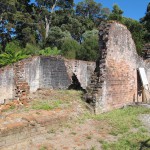
On tiny Sarah Island, we saw the remains of compact cells and workhouses, and heard more substantial stories about the lives of the imprisoned and the harsh cruelty of the place.

It was good for them, according to its governor in 1824, “Nothing I can imagine is more likely to lead to the moral improvement of the most abandoned Characters in this colony than a rigid course of discipline, strictly and systematically enforced.”
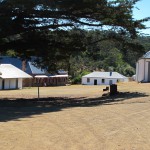
At Maria Island, we saw what has been restored of the convict buildings, with an offhanded display of the sorrows of one Englishman transported here for his politics. Cells weren’t necessary in the early 1800s, as Maria sits a half hour powerboat ride from shore. A long stone building that then housed prisoners now accommodates backpackers instead.
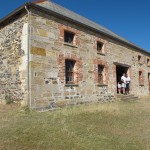
Until 1854 the prisons were places typically of hard labor on projects in the service of the country, like timber harvesting or shipbuilding, and often of severe discipline as a form of moral rehabilitation. Women served as servants to other settlers or labored in workhouse prisons known as factories. The governors believed the prisoners’ “whole fate should be…the very last degree of misery consistent with humanity.” They aimed to “grind rogues honest.” According to Wikipedia, 75,000 convicts ended up on Tasmania, or about 40% of all convicts sent to Australia. This was a new world Devil’s Island.
And that’s where Van Diemen comes in…
Hold me now, oh hold me now
Till this hour has gone around
And I’m gone on the rising tide
For to face Van Diemen’s land
It’s a bitter pill I swallow here
To be rent from one so dear
We fought for justice and not for gain
But the magistrate sent me away
(Song about John Boyle O’Reilly, a transported poet, from U2’s Rattle and Hum)
When Abel Tasman first explored this island in the 17th century, in the service of the Dutch East India Company, he diplomatically acknowledged the company’s Governor-General by naming it, Anthoonij van Diemenslandt. Though the Dutch never returned, by the time the British began to settle prisoners here in 1803, it was still known as “Van Diemen’s Land” (pronounced like demon). The aptness or irony of this name for a penal colony was not lost on the early arrivals, who appear to have called themselves “Vandemonians.”
Not surprisingly after a while, upright, law-fearing settlers became increasingly troubled by the former prisoners released to freedom. Particularly during the devil-may-care gold rush in the state of Victoria, when many ex-prisoners settled in rough mining towns to search for gold, other citizens were not pleased.
By 1853, Australia tired of being a dumping ground for miscreants so transportation officially ceased in Van Diemen’s Land as well as in mainland Australia. At that point, the Vandemonians clearly recognized they needed to jettison all the negative associations from their history and their island’s name. So they hearkened back to Abel Tasman himself to rename it Tasmania.

But Australians don’t forget. Touring the prison sites of Tasmania is one of the most popular activities for Aussie tourists. Port Arthur on the peninsula, in particular, welcomes busloads of visitors who wish to delve into the historical strata of their culture. It has the best remaining buildings from that time because they still operated till the late 19th century and have seen extensive restoration. It is also notorious: those who committed the most serious crimes, and repeat offenders, were brought here.
Nor did the Van Diemen name vanish. In 1825, the Van Diemen’s Land Company (VDL) was established in England as a publicly held one and has been listed on the London exchange ever since, the only one reputedly still a Royal Charter. The company was originally granted rights to commercial development of a swath of the eponymous island in the northwest, principally to produce wool.
However, in the process, they inevitably confronted the original inhabitants, the island’s nomadic aborigines. This usurpation went peacefully at times, but violently in the end, as the tribes resisted the incursion. The company might not have been directly responsible for any violence, but they were certainly part of the land grab that undermined the aborigine’s life across Tasmania and led inevitably to conflict. By the late 1840s, few aborigines remained.

In another post, we described the iconic Tasmanian Devil, whose screech, solitariness, vampire-like canine teeth and fierce, tenacious nature led to its demonic naming by early settlers. No real threat to humans, though, this Devil got a bad rap. For the greater devils, you discover, were the European settlers who tormented their imprisoned and eliminated the natives they found in this Edenic new world.
Today VDL operates within just a small, residual corner of northwest Tasmania, “committed,” according to its web site, “to quality land, dairy, and stock management practices for over 180 years.”
Do they understand – as we do now – the historical ironies within this recent press release?
VDL SENSITIVE TO DEVILS
The Van Diemen’s Land Co says it is working closely
with the Save the Devil Program and is very sensitive to their habitat needs.
(Also, for more pictures from Australia, CLICK HERE to view the slideshow at the end of the Australia itinerary page.)


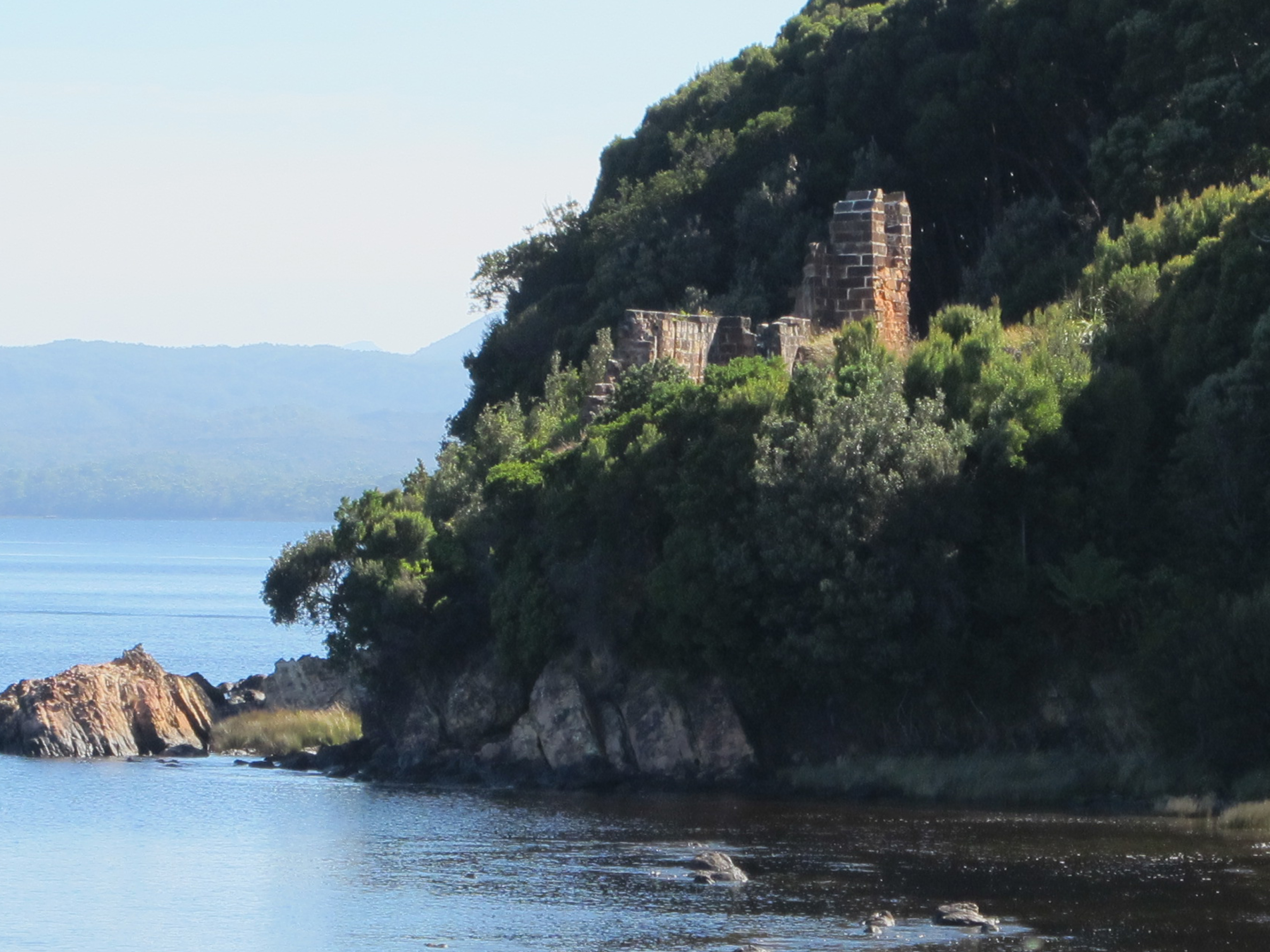
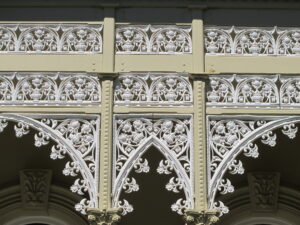
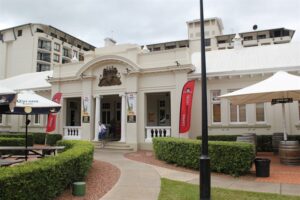
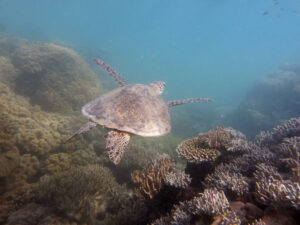
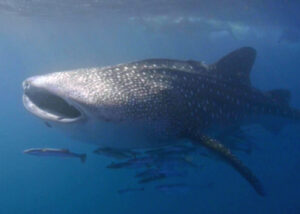
I really had no idea about this history, thanks!